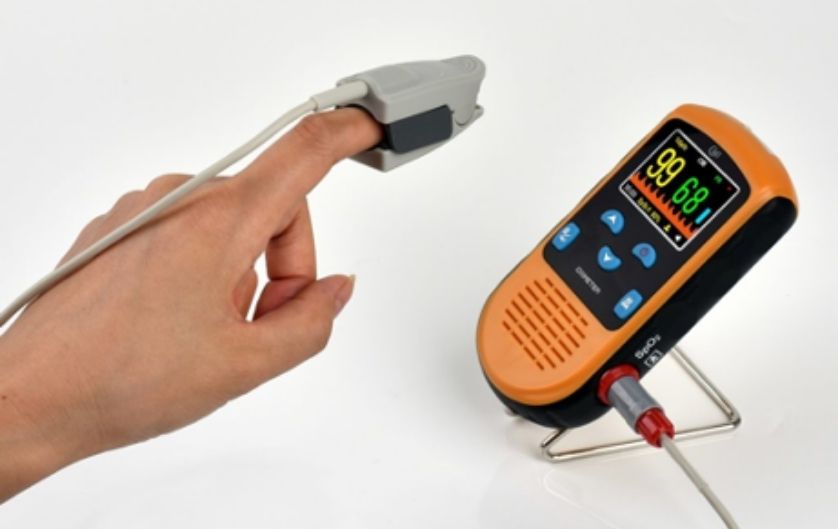Your cart is empty now.

Which Finger You Should Use a Pulse Oximeter On | CMI Health
Finger probe pulse oximeter sensors are one of the most common variations of at-home pulse oximetry devices used across the country. Designed to make taking your oxygen saturation readings as quick and painless as possible, this method is the best at accommodating a fast-paced lifestyle. However, many who use these devices often find themselves wondering whether they’re placing their probe correctly—or even whether they’re getting accurate enough readings. Continue reading to learn which finger you should use a pulse oximeter on and why it makes a difference.
Why Take Oximeter Readings Using a Finger?
It’s common knowledge that oxygen readings can be taken on various parts of the body—such as the earlobe or even a toe. But few areas offer the convenience that the finger does. Always accessible and inconspicuous, the finger makes the perfect place to quickly attach a probe, get a reading, and move on with your day. After all, there’s no need to pull your hair back or take off your shoes for something that should only take a few minutes.
Optimal Probe Placement on the Finger
But when it comes down to which finger you should use a pulse oximeter on, the answer isn’t as cut and dried. Based on the results of one specific study, it was found that the highest SpO2 value was measured by the subjects’ right middle fingers. However, this variance was very slight when compared to the readings of all the other fingers. For this reason, it’s believed that you will obtain similar measurements regardless of which finger you place the probe on. It is still in good practice to reduce the margin for error by using a more uniform digit like the index or middle finger rather than the pinky or thumb.
Factors That Can Affect Oximeter Finger Readings
It is important to mention as well that while the finger itself might not dictate a difference in SpO2 readings, the substances present on them can. Those wearing dark-colored nail polish or artificial nails are more likely to obtain inaccurate readings because the probe’s sensing lights can’t count cells properly through these surfaces. It’s also possible for an oximeter probe to misread if you fail to wash your hands before using it. A layer of grime or dust particles can hinder the light’s ability to reflect, so you should always wash your hands prior to using your device. Other factors that can affect pulse oximeter readings include quick body movement while taking your readings, outside lighting, and poor blood circulation.
For more information on how pulse oximeter sensors take their readings, reach out to CMI Health Inc. Along with our handheld pulse oximeter accessories, we also offer insight into the medical science behind these complex machines. We find that this not only makes it easier for our customers to use our products, but it makes them more confident as well.
Interested in purchasing your own Pulse Oximeter or Pulse Oximeter Accessories? View our collection of easy to use, clinical grade monitoring devices here.



